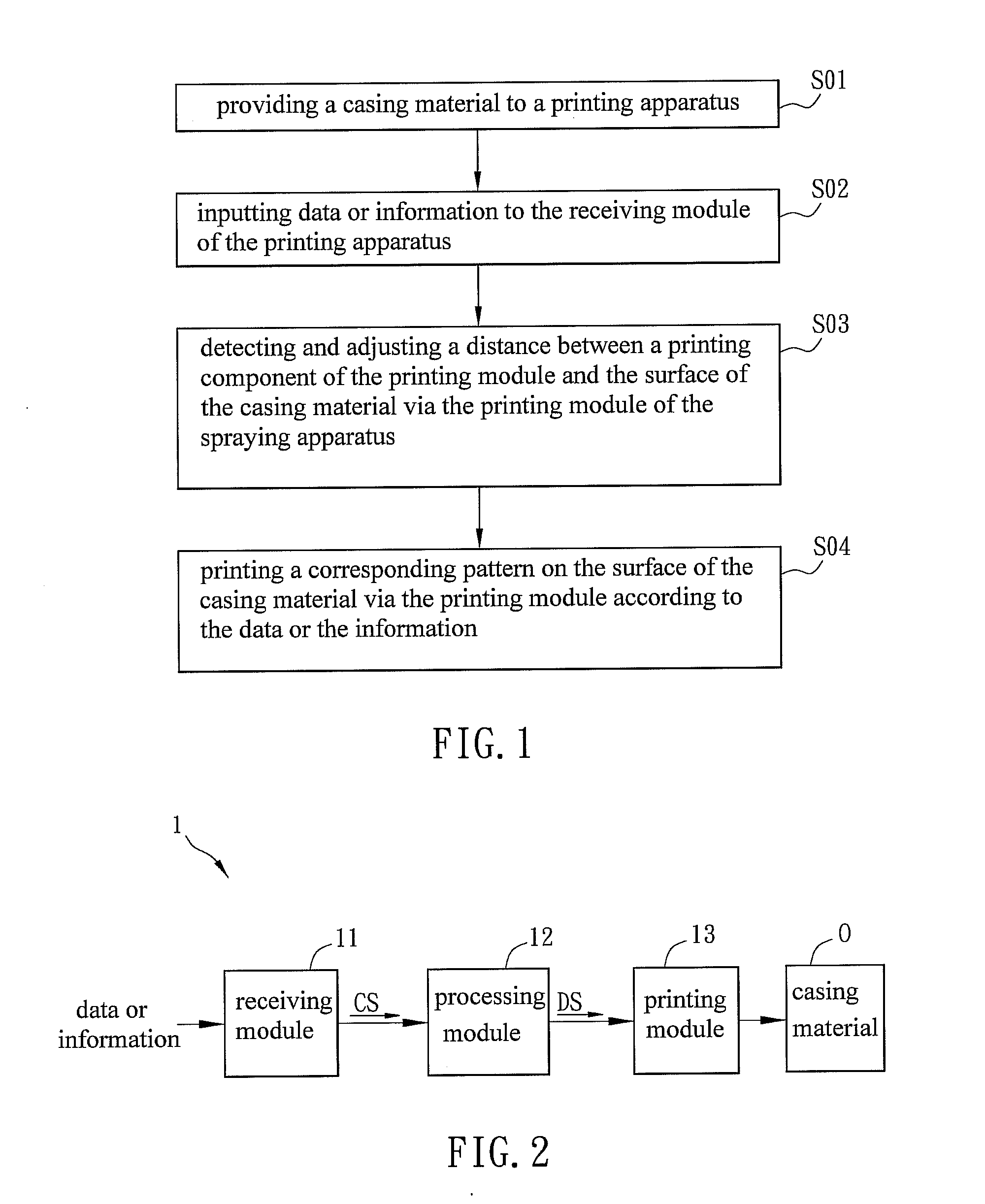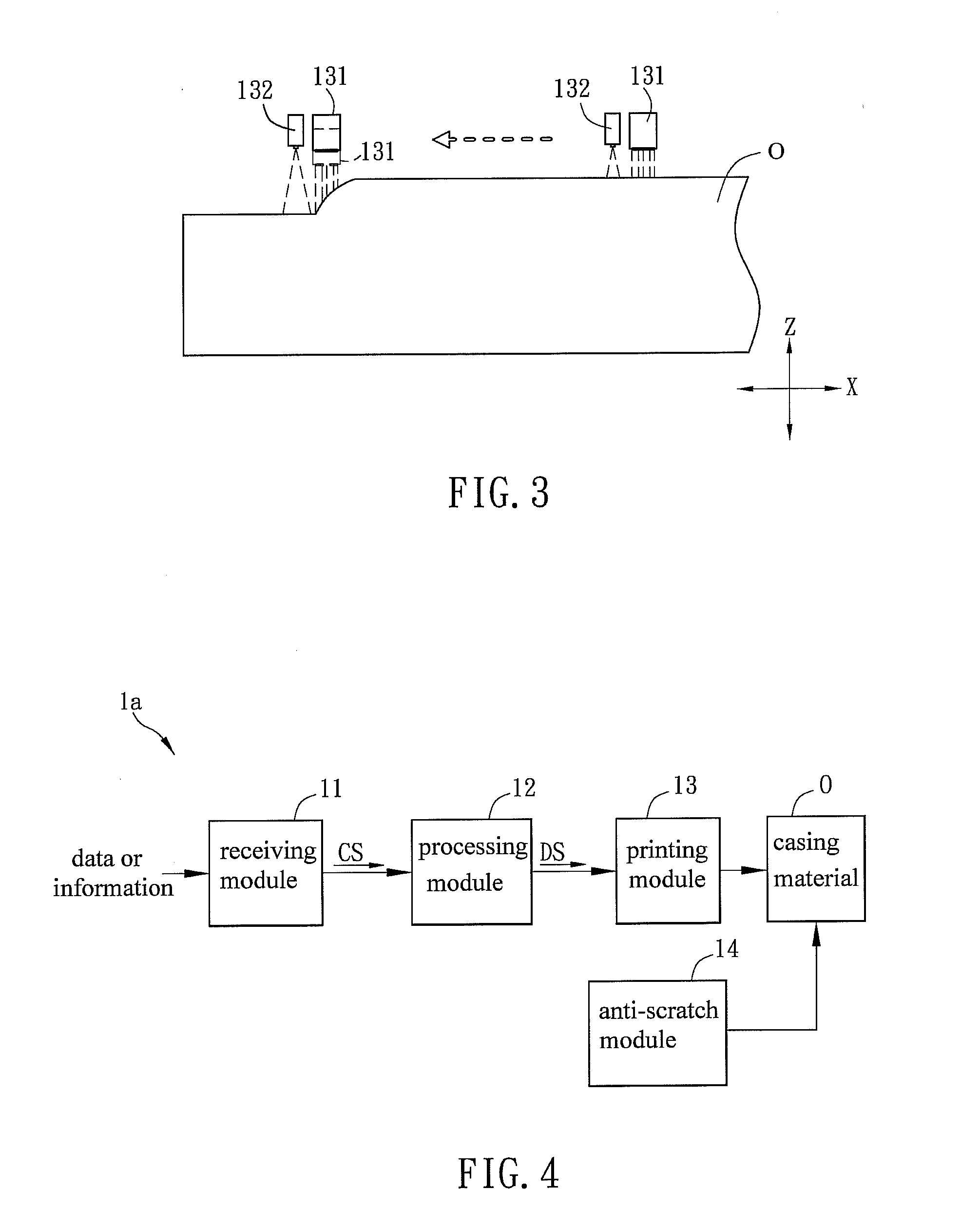Casing printing method and printing apparatus using the same
- Summary
- Abstract
- Description
- Claims
- Application Information
AI Technical Summary
Benefits of technology
Problems solved by technology
Method used
Image
Examples
Embodiment Construction
[0022]A casing printing method and a printing apparatus using the same are illustrated with relating figures, and the same symbols denote the same components.
[0023]FIG. 1 is a flow chart showing steps of a casing printing method in a first embodiment, and FIG. 2 is a block diagram showing a printing apparatus in a first embodiment.
[0024]A printing apparatus 1 includes a receiving module 11, a processing module 12 and a printing module 13.
[0025]The casing printing method includes following steps: providing a casing material O to a printing apparatus 1 (S01); inputting data or information to the receiving module 11 of the printing apparatus 1 (S02); detecting and adjusting a distance between a printing component of the printing module 13 and the surface of the casing material O real-time via the printing module 13 of the printing apparatus 1 (S03); and printing a corresponding pattern on the surface of the casing material O via the printing module 13 according to the data or the infor...
PUM
 Login to View More
Login to View More Abstract
Description
Claims
Application Information
 Login to View More
Login to View More - R&D
- Intellectual Property
- Life Sciences
- Materials
- Tech Scout
- Unparalleled Data Quality
- Higher Quality Content
- 60% Fewer Hallucinations
Browse by: Latest US Patents, China's latest patents, Technical Efficacy Thesaurus, Application Domain, Technology Topic, Popular Technical Reports.
© 2025 PatSnap. All rights reserved.Legal|Privacy policy|Modern Slavery Act Transparency Statement|Sitemap|About US| Contact US: help@patsnap.com



